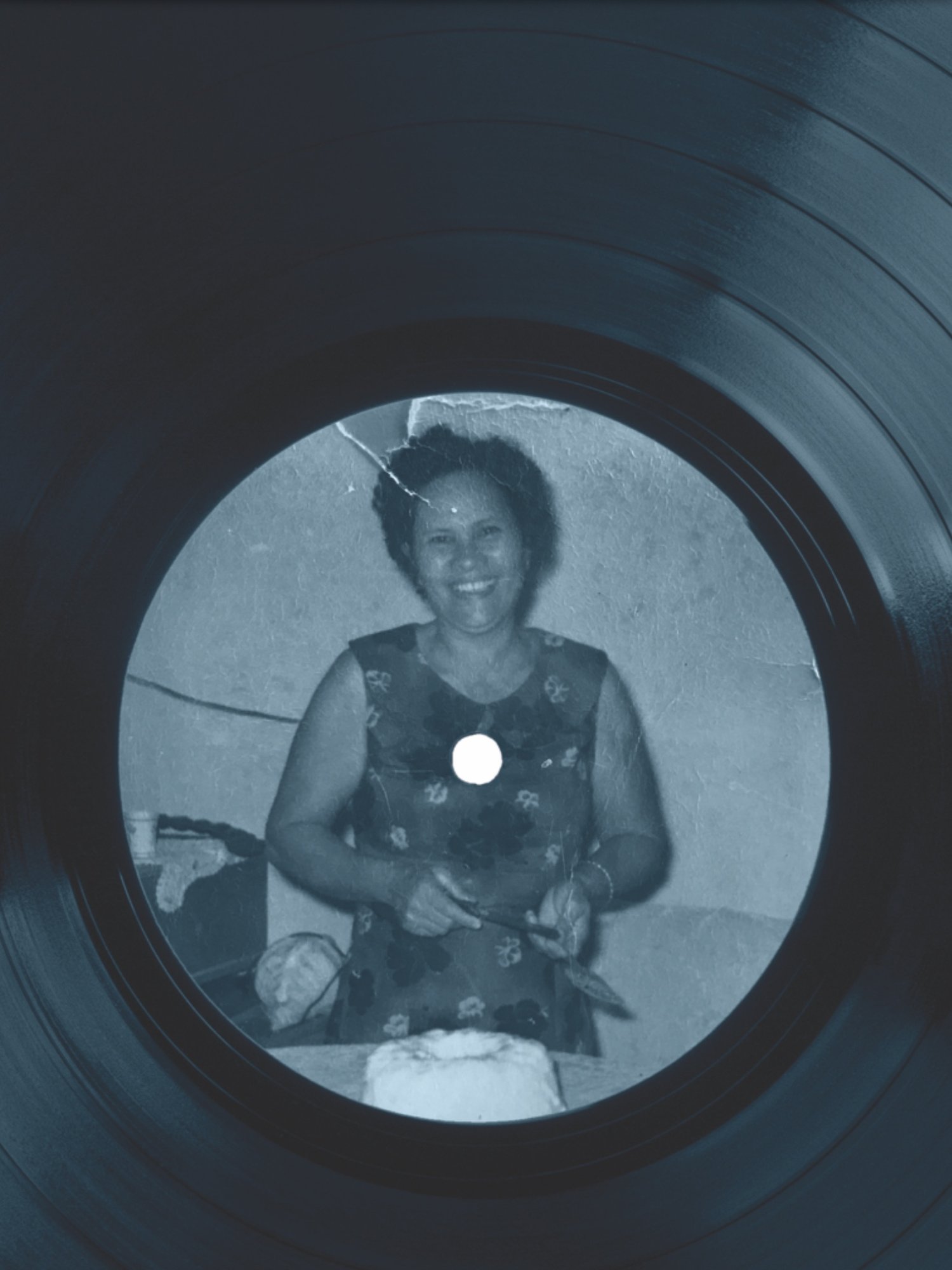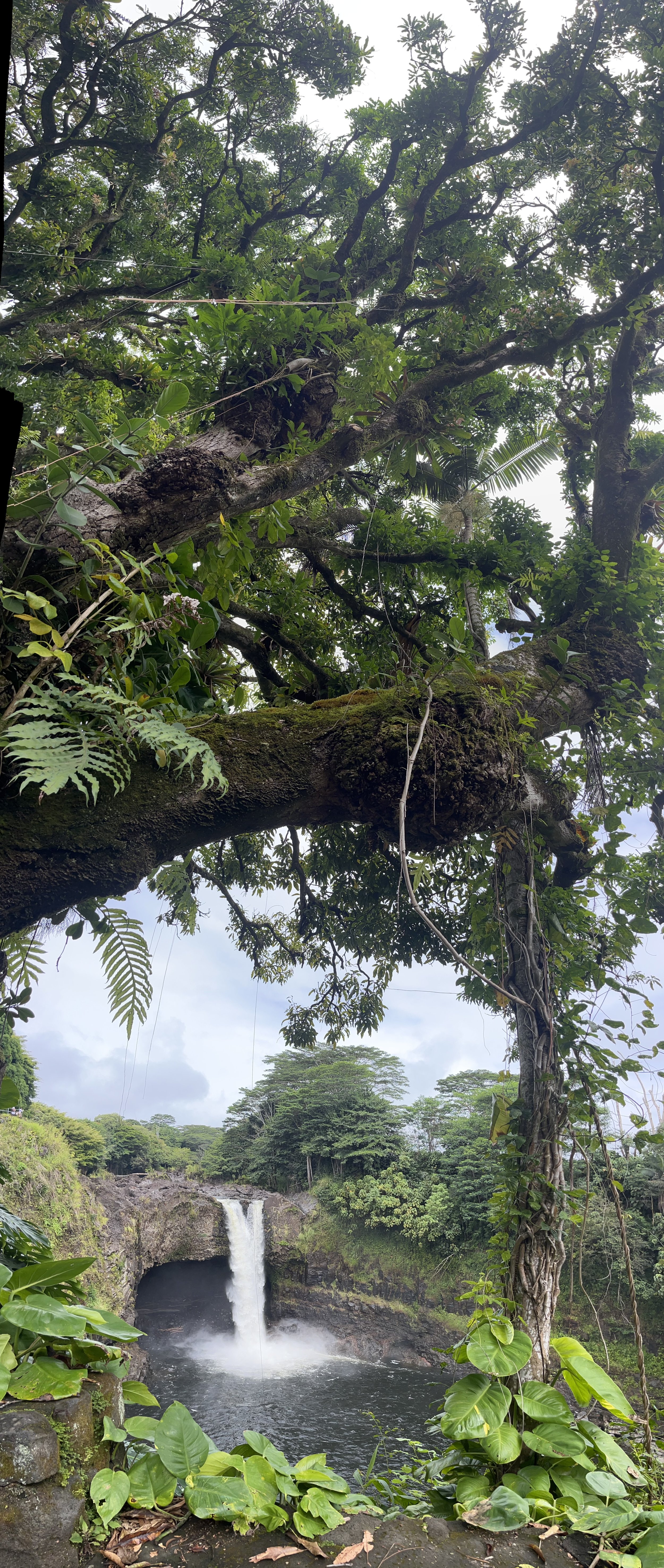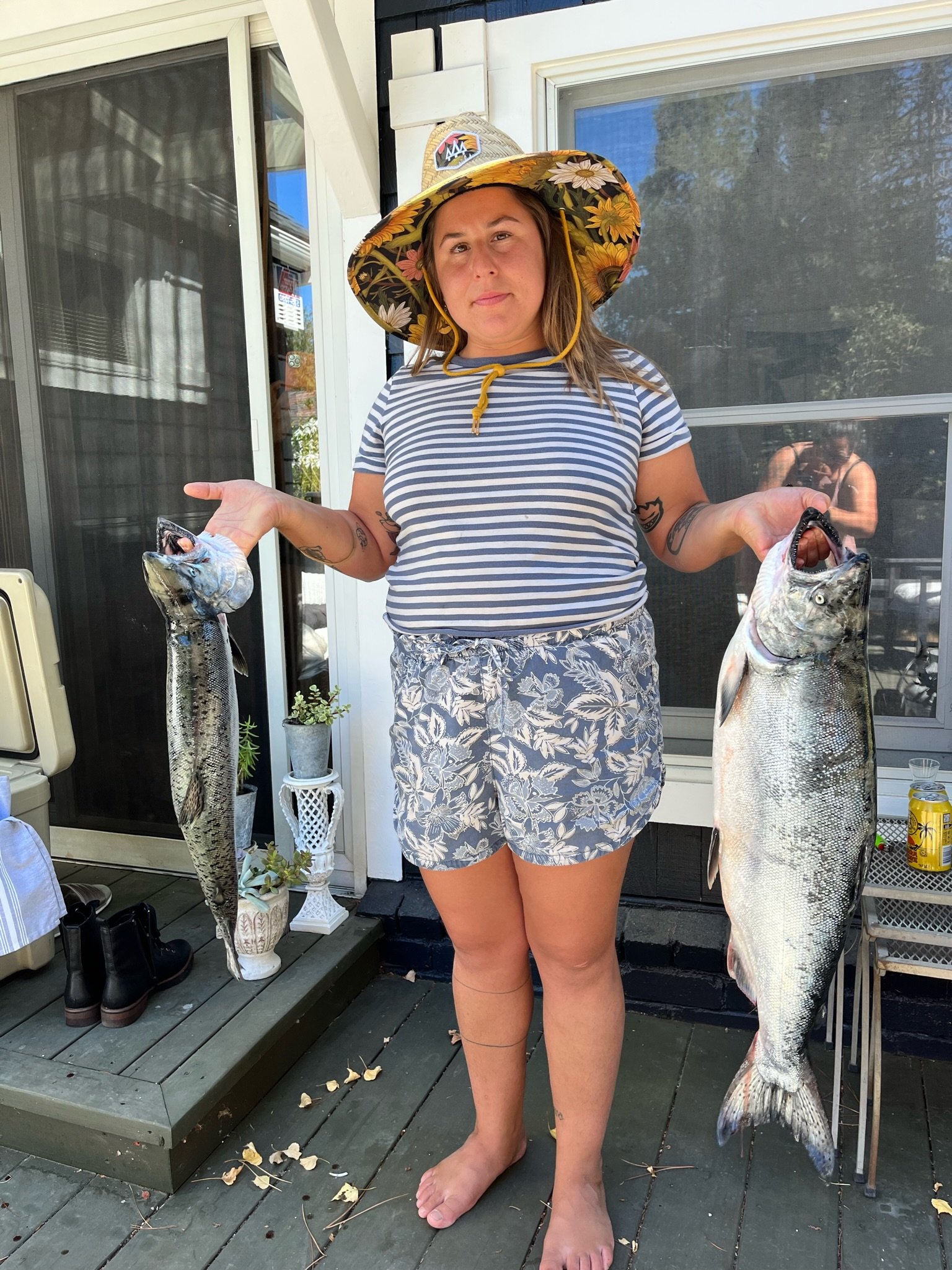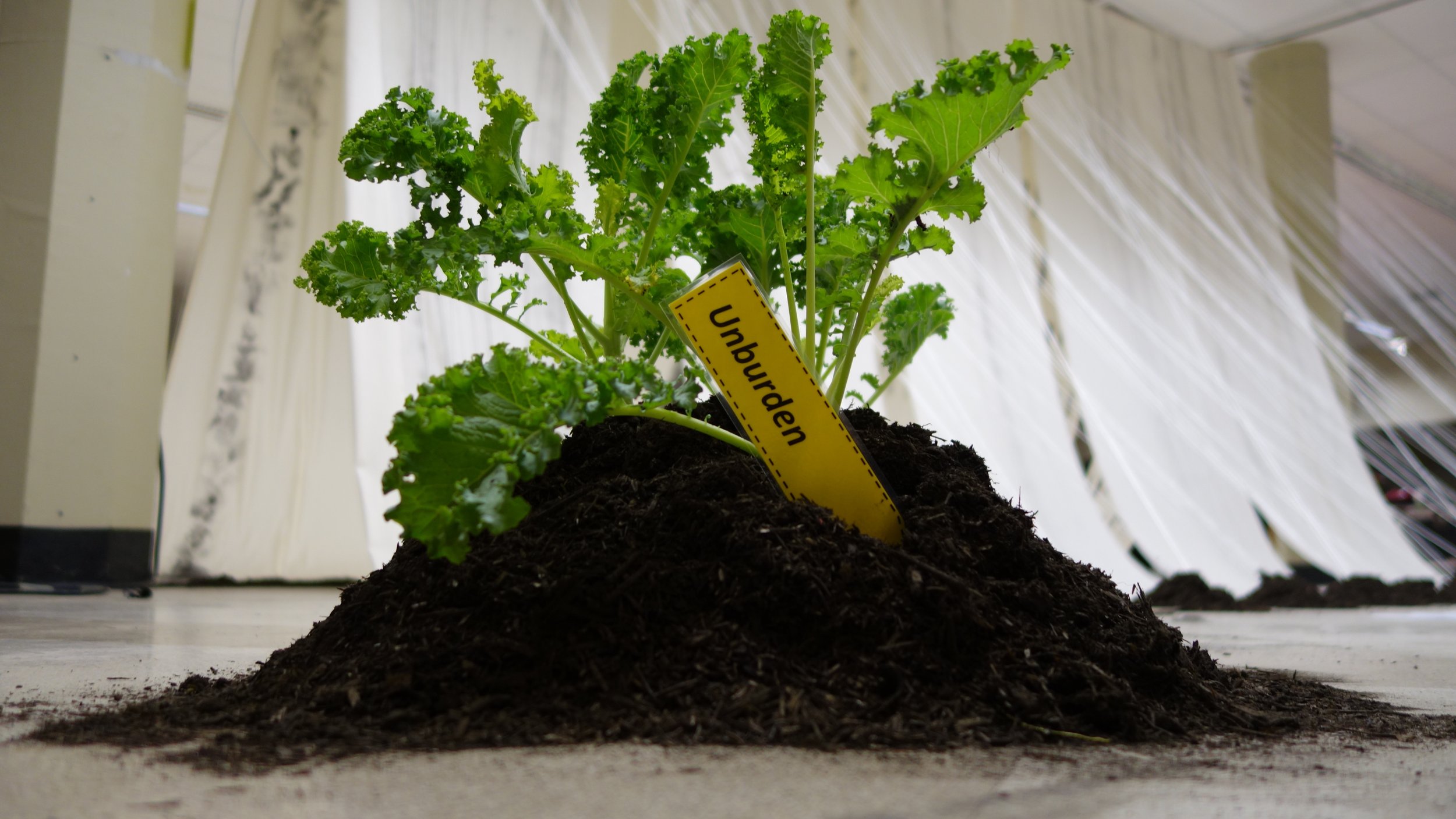
Art 25: Art in the Twenty-fifth Century
Art 25: Art in the 25th Century is a dynamic collective comprised of artists Lisa Jarrett (Portland, OR), Lehua M. Taitano (Santa Rosa, CA), and Jocelyn Kapumealani Ng (Honolulu, HI). It is the culmination of years (and ancestral lifetimes) of shared curiosity, vision, and an outright insistence to see their culture thrive within contemporary art. Art 25 investigates how Indigenous and Black art lives in the 21st century and collaborates with contemporary artists worldwide who envision how it will flourish in the 25th century and beyond. In forming a future archive, the collective interrogates historical access, curation, collection, consumption, and preservation of Indigenous and Black art and culture.
Art 25 has been featured in exhibitions by the Smithsonian Asian Pacific American Center, Orí Gallery, Yerba Buena Center for the Arts, Arts Research Center at UC Berkeley, Arc Gallery and Studios, and forthcoming projects with Delisted (Jennifer Calkins) and Pacific Island Ethnic Art Museum in Long Beach.
Our Core Collective
-

Lisa Jarrett
-

Jocelyn Kapumealani Ng
-
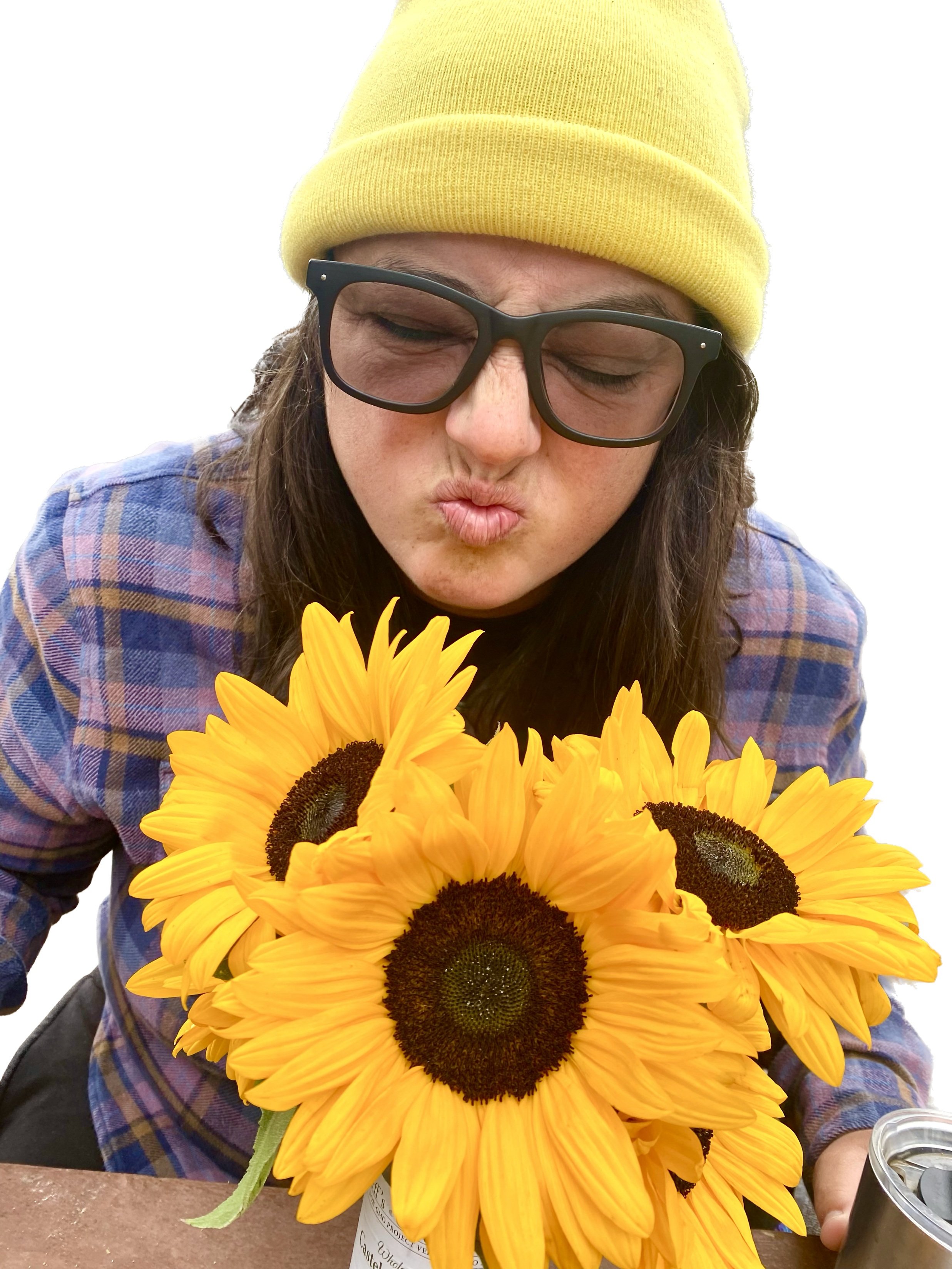
Lehua M. Taitano
PROJECTS, EXHIBITS, ENGAGEMENTS
〰️
PROJECTS, EXHIBITS, ENGAGEMENTS 〰️
Delisted
Delisted is a project by Jennifer Calkins (she/they/Dr.) about living beings delisted from the U.S. Fish and Wildlife Service’s “Lists of Endangered and Threatened Wildlife and Plants” due to presumed extinction. The implications of becoming “delisted” are complicated and, unfortunately, familiar for Indigenous communities and ecosystems. In collaboration with Jennifer Calkins and several other artist participants, Art 25 investigates our relationship with a plant relative endemic to Hawai’i: so-called Phyllostegia glabra var. laniensis through ceremony and ancestral invocation. We bring the embodiment of our cultural traditions and our creative imaginings as one response to government-sanctioned erasure, as an effort toward our collective healing. Learn more about Delisted.
Gyotaku at Auntie’s
Gyotaku at Auntie’s is a collection of gyotaku Chinook Salmon prints made during an Art 25 retreat at the home of a dear Auntie. Sustenance, ceremony, and offering are at the heart of this gathering and archive creation. Prints are not available for sale. Rather, they are to be given as gifts to loved ones and community members, to commemorate the great care and awareness in the taking of life for the nourishment of our own. Two Chinook Salmon were pole-caught by Art 25 collaborator Halla Taitano Hammoudeh. Collaborative meals were prepared from these beautiful fish, including kelaguin guihan (a CHamoru dish), salmon sushi bake, salmon consummé, and broiled salmon filets. Additionally, many salmon filets were frozen and gifted to family members, and salmon carcasses were composted to fertilize redwood trees growing at Auntie’s house. Gyotaku prints are vegetable-based gyotaku ink on various papers.
Venetian Bi-ennial
Venice Biennale? Decideldly not. The Venetian Bi-ennial is an Art 25 investigation of portals and simulacra.
In the middle of the Las Vegas strip lies the Venetian Resort, a luxury casino and hotel owned by Vici Properties. Though the Venetian serves as a glamour—an obvious but diminutive imitation of a Venice, Italy, vacation—it, along with all properties in Las Vegas, lies on traditional Nüwüwü (Chemehuevi) and Nuwuvi (Southern Paiute) lands.
Part somatic poetry exercise, part invocation ceremony, the artists consulted Tarot cards created by Asian American Literary Review (AALR) for their project Open in Emergency. The project is described as “A little self-care (and anti-racist) magic! In the spirit of fortune-telling practices so prevalent in our communities, we’ve created a new deck of tarot cards, featuring original art and text that work to reveal the hidden contours of our Asian American emotional, psychic, and spiritual lives, as well as the systems of violence that bear down upon them.”
Based upon a dream depicting a reflective pool of black water and ancestors just beyond, the artists chose to interact with the Ancestor card, the text of which was created by Gerald Maa, co-founder of the AALR. Unlike other tarot cards, this one reads as a set of instructions, which the artists followed, as invocation. Beneath surfaces, beyond so-called prestigious, curated experiences, in spite of capitalistic excess and money-based recreation, what energies lie dormant, waiting for us to speak their names?
Resulting events in the weeks afterward were tumultuous, chaotic, and necessary for all the artists, though in idiosyncratic ways. What is apparent in the aftermath is that this project was a turning point—a portal revealed to force oneself to enter. And on the other side? Everything that comes next.
Future Nostalgia
Future Nostalgia is a short poetry film collaboration with guitarist Oliver Mok, who composed the original score. 8mm Cine Kodak Eight film, shot by members of the Shelton family in 1981-1982 documents the final days of life on the island of Guåhan, leading up to the family’s migration to the Appalachian hills of North Carolina, including the flight overseas and its touchdown. Vocals by Art 25 include readings of collaboratively written poems: “To Claim,” “To Bury,” “To Carry,” “To Float,” and “To Dream.” Future Nostalgia first appeared in UC Berkeley’s Arts Research Center’s Flash Reading Series, #35, Spring 2022.
Collaborative Poetry
“Imaginary Photo Album or, When We Die, Our Polaroids Speak to Our Living Descendants” is a collaboratively written poem originally published by the Academy of American Poets Poem-a-Day (May 23, 2022) and is forthcoming from The Anthology of Asian American Pacific Islander Poetry by Haymarket Books, 2024.
Imaginary Photo Album or, When We Die, Our Polaroids Speak to Our Living Descendants
To Keep
the memories nimble, place your fingers inside the mouth of her hair.
The history there is one motion, told and retold by millions of bodies
over hundreds of years. Sister, mother, grandmother, aunt, cousin,
lover, friend, partner, braid me. Keep the tales of what we cannot forget here.
To Float
think of silted braided rivers. Now extricate the rivulets. Use your tongue.
Can you discern salt from iron or shell from shale? This is what it is like
to make a world with words.
To Re-grow
a tongue, pull it from beneath silt at the bottom of the sea.
If it is knotted, frayed, tangled, you can take up my voice. Look for my
feathers in dust, find my matted feathers in the surf. There, make
a nest for me. Gather shells and driftwood. Dig a small bowl
in the sand. Let the patterns arrange themselves into a beautiful thing.
Ask me to come, and you will find me on the horizon, glittering.
To Claim
you we claimed ourselves. We touched the surfaces of mirrors
with no reflections. Hic sunt leones. Here there are lions. Here are waves.
Imagine us a tide of lions crashing on sandy shores, returning for what is ours.
To Unfold
into a receptacle for holding joy, entrust your tender heart to another.
Look. We are more than our scars. We hold the memory of trauma
in our roots. And still, here is a moment of pure joy. See how our chests
shake the air with a trust manifested from generations of resilience?
Reach for each other. Embrace. Grow flowers with your lungs.
Copyright © 2022 by Art 25: Art in the 25th Century. Originally published in Poem-a-Day on May 23, 2022, by the Academy of American Poets.
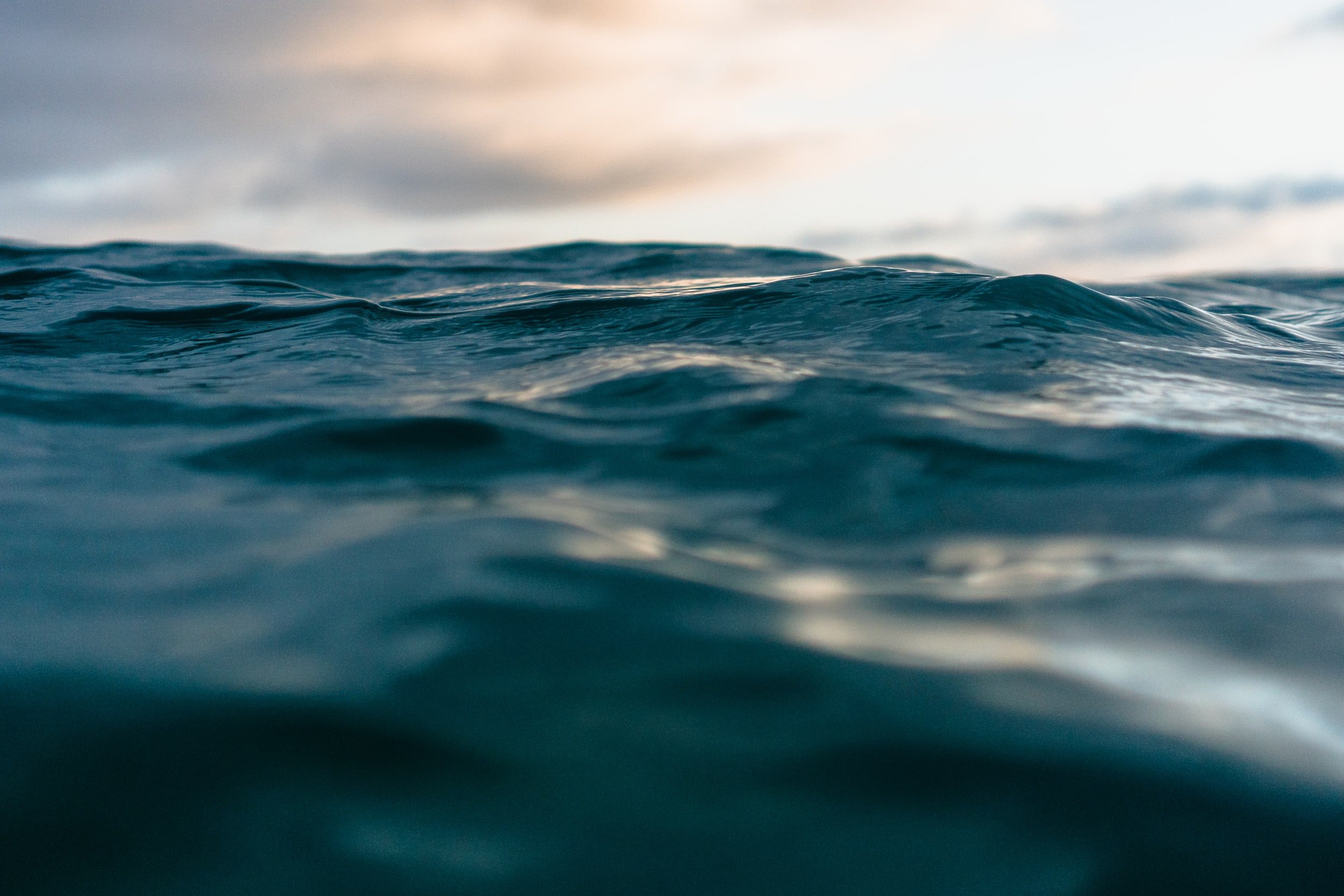
Future Ancestors
Future Ancestors is an archive of queer familial intimacy. When Black and Indigenous bodies are kept at each other’s distance, the importance of coming together becomes more precious, resonant, and necessary. It is out of this necessity that we create and document the opportunities of time and intention. To talk story, to sing, to share our cultural histories. To create routes that span geographies and centuries. We are CHamoru, Kanaka Maoli, Black, and many mixed ancestries. All reside in this intimacy. Listen. These ancestries speak.
Transcript:
“(To Heal)”
we peel the wounds to reveal fresh, tender shoots. We hold each
other in ecstatic queer joy. We, prisms of our culture, bend the light
so that our kinfolk can see there is always more than one way. We, healers. We, storytellers, we weavers of our history and lives. We are
here. We will not leave you. We are deeper than scars and skin. We are the beating blood in your veins. We are the marrow to hold you. We come to you from the past, the now, the future. We are your resilience when you falter. We are the cocoon in the next metamorphosis. We are seasons of grief. Come closer.
“(To Re-grow)”
a tongue, pull it from beneath the silt at the bottom of the sea.
If it is knotted, frayed, tangled you can take up my voice. Look for my feathers in dust, find my matted feathers in the surf. There, make a nest for me. Gather shells and driftwood. Dig a small bowl in the sand. Let the patterns arrange themselves into a beautiful thing. Ask me to come, and you will find me on the horizon, glittering.
“(To Float)”
think of silted braided rivers. Now extricate the rivulets. Use your tongue. Can you discern salt from iron or shell from shale? This is what it is like to make a world with words.
“(To Honor)”
each other, write the stories. Here is mine: I am Åga. In spirit and form. Mochong! Last wombed crow of Guåhan. The papers will tell you I died, captive and heartbroken. This is a partial truth. The past is above and below, behind and beyond, is much more complex than a straight line.
See now, in the present, my cloak of black feathers. See now, in the past, the smear of my mouth, my voice taken too soon. How can any one creature carry a nation of her people? When the nation is reduced to its last, failing, womb, who will come forward and speak of rebirth? See now, in the future, I wear the Sinahi and the Spondylus. Mochong! Complete being. Mohong! Two-spirited Åga of heaven and earth. I grow horns made of ancestral bones and feather my own tongue into existence. This is how legend becomes truth.
“(To Unfold)”
into a receptacle for holding joy, entrust your tender heart to another. Look. We are more than our scars. We hold the memory of trauma in our roots. And still, here is a moment of pure joy. See how our chests shake the air with a trust manifested from generations of resilience? Reach for each other. Embrace. Grow flowers with your lungs.
“(To Trace)”
the peculiar work of healing the past, a scar, remember not only the injury but also its healing. Before the cancer. How she held me. As if we were trees. To bring injury into the light that never had a chance to scar—now that’s grasping the earth in one arm and the heavens in the other. But the past is above and below, behind and beyond, is much more complex than a straight line. It is here. So we heal ourselves then and now, over and over, so that you might learn the patterns for yourself. A master has one way of doing her task. A novice has an infinite number of approaches to the same. This is what I have learned about vulnerability. Bend, supple,
like tenderest niyok shoots, and the paths unfold, too numerous to count. Tradition depends on survival. I have found our survival depends on tenderness and innovation.
“(To Carry)”
Where do you hold your ancestor’s trauma?
Some days I look into the mirror.
In your breast? In the nape of your neck?
I can see.
In the bags under your eyes?
(The pain I’ve inherited.)
In the curve of your hips? In the arch of your spine?
As if I dressed myself in it.
In the creaking of your bones?
This morning I’m not sure. Am I wearing it?
Or it is wearing me.
“(To Dream)”
visit the gathering place of possibility. The entrance is at the rivers’ confluence. There we become opened. In the estuary, find a chest of
sun, left unlatched for fumbling fingers. Find the sediment of mountain springs. Find your relatives, who all gather for the exchange. Find yourself, complete with your shadow, growing long in evening slant.
“(To Bury)”
the swell begin your line anywhere and bind me to you. Like let me dress you in your story, like I tell you haku lei, like what binds us bonds us closer, like woven story. Show me.
“(To Forget)”
how time taught you the crime was running and the weight was yours to bear. But we are now, and those times are running elsewhere. Tie your burden to my chest, let me lift infinity to amnesia.
“(To Keep)”
the memories nimble, place your fingers inside the mouth of her hair.
The history there is one motion, told and retold by millions of bodies
over hundreds of years. Sister, mother, grandmother, aunt, cousin, lover, friend, partner, braid me. Keep the tales of what we can not forget... here.
“(To Claim)”
you we claimed ourselves. We touched the surfaces of mirrors with no reflections. Hic sunt leones. Here there are lions. Here are waves. Imagine us a tide of lions crashing on sandy shores, returning for what is ours.
Art 25/Future Ancestors at Yerba Buena Center for the Arts as part of AFTER LIFE (we survive) Image by Tommy Lau, 2020
Orí Gallery Installation View. Portland, OR
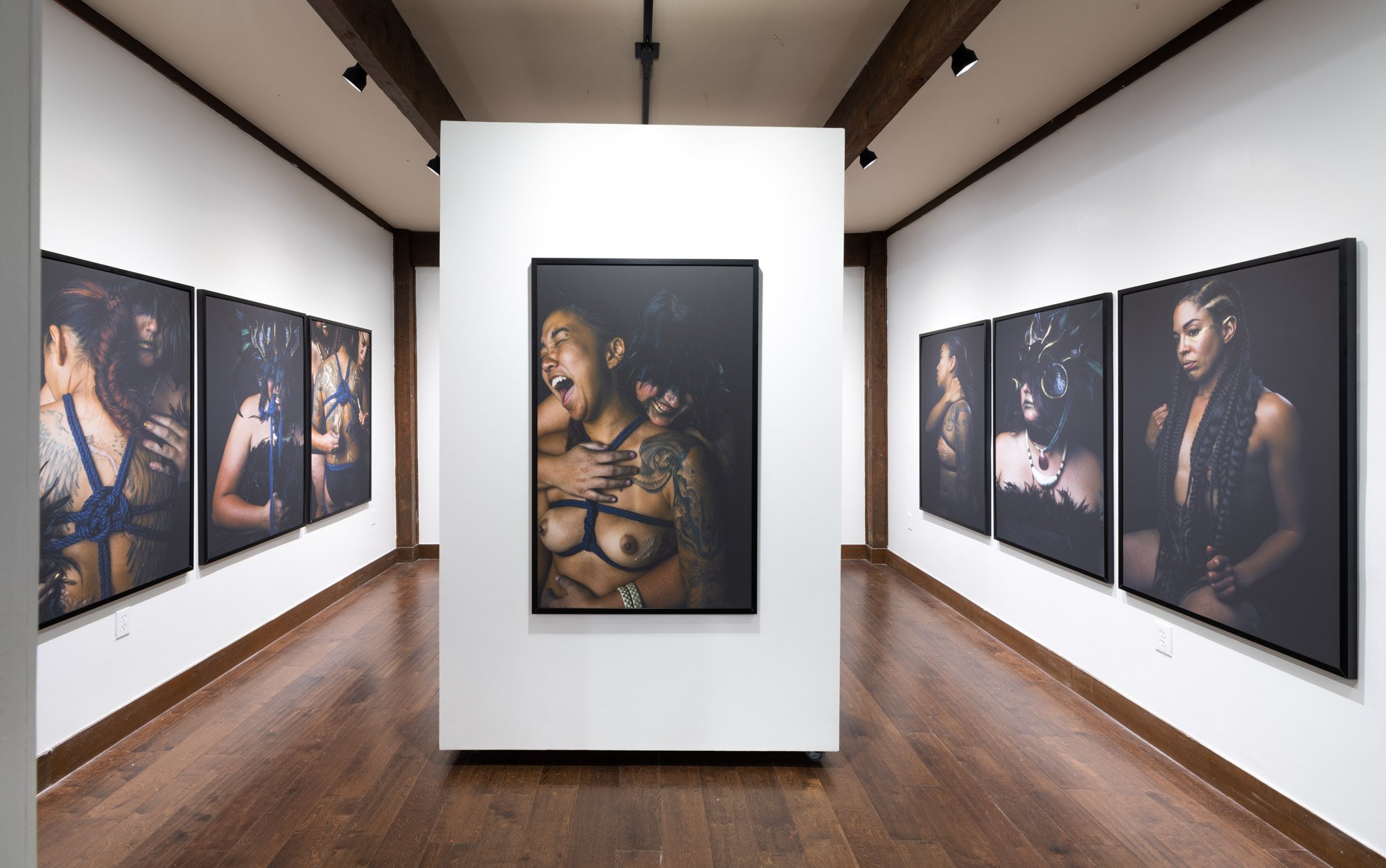
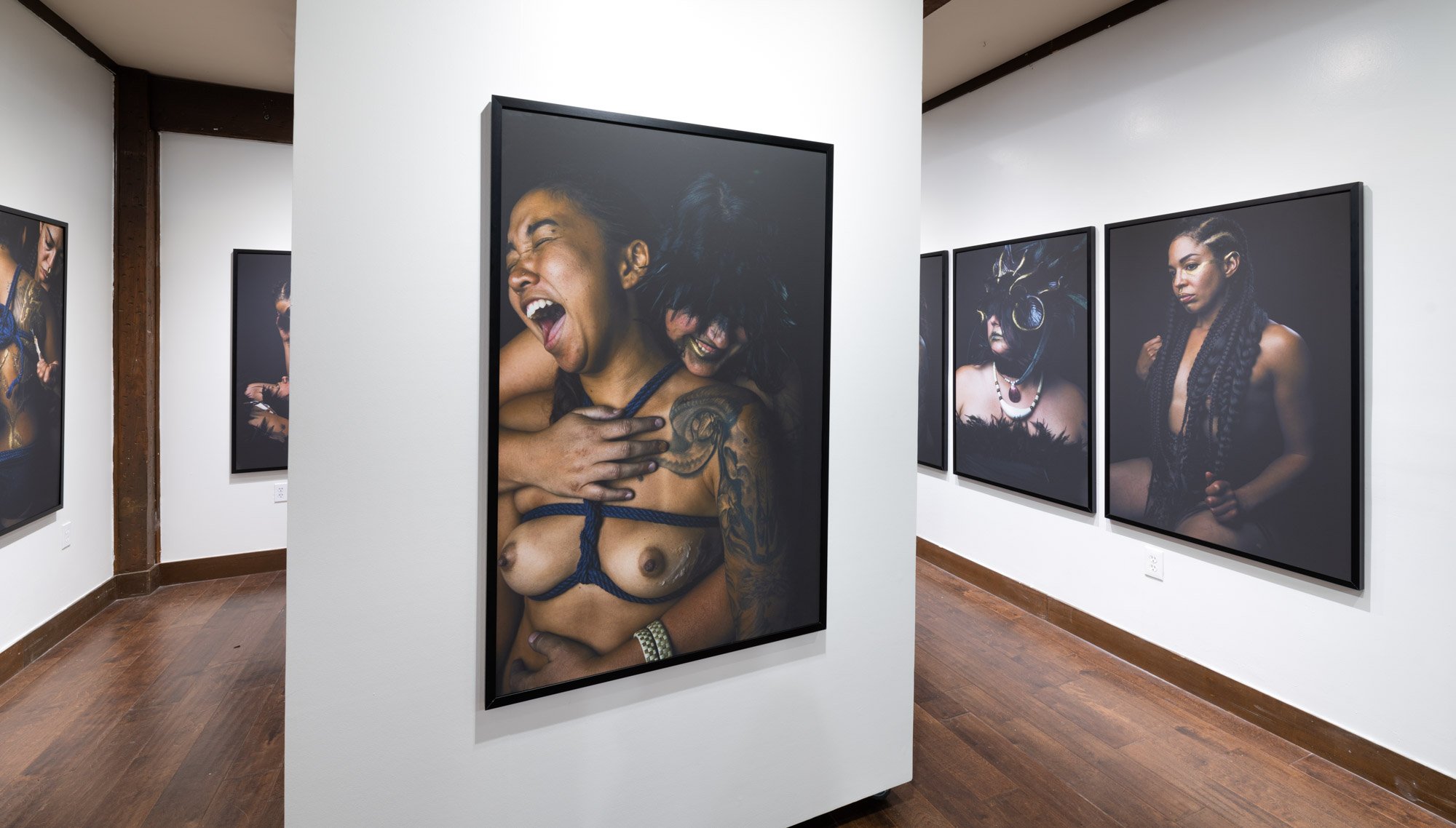
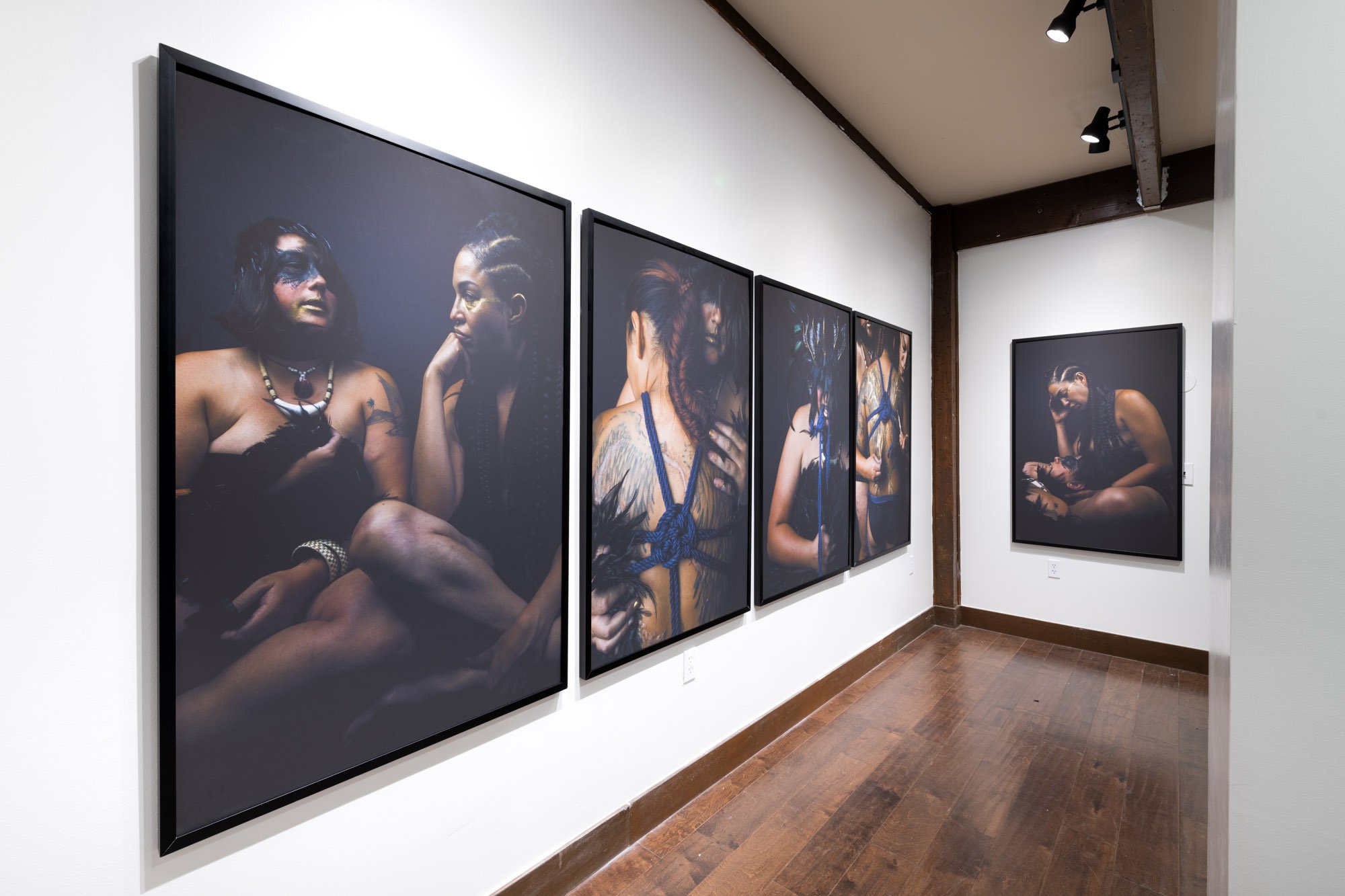
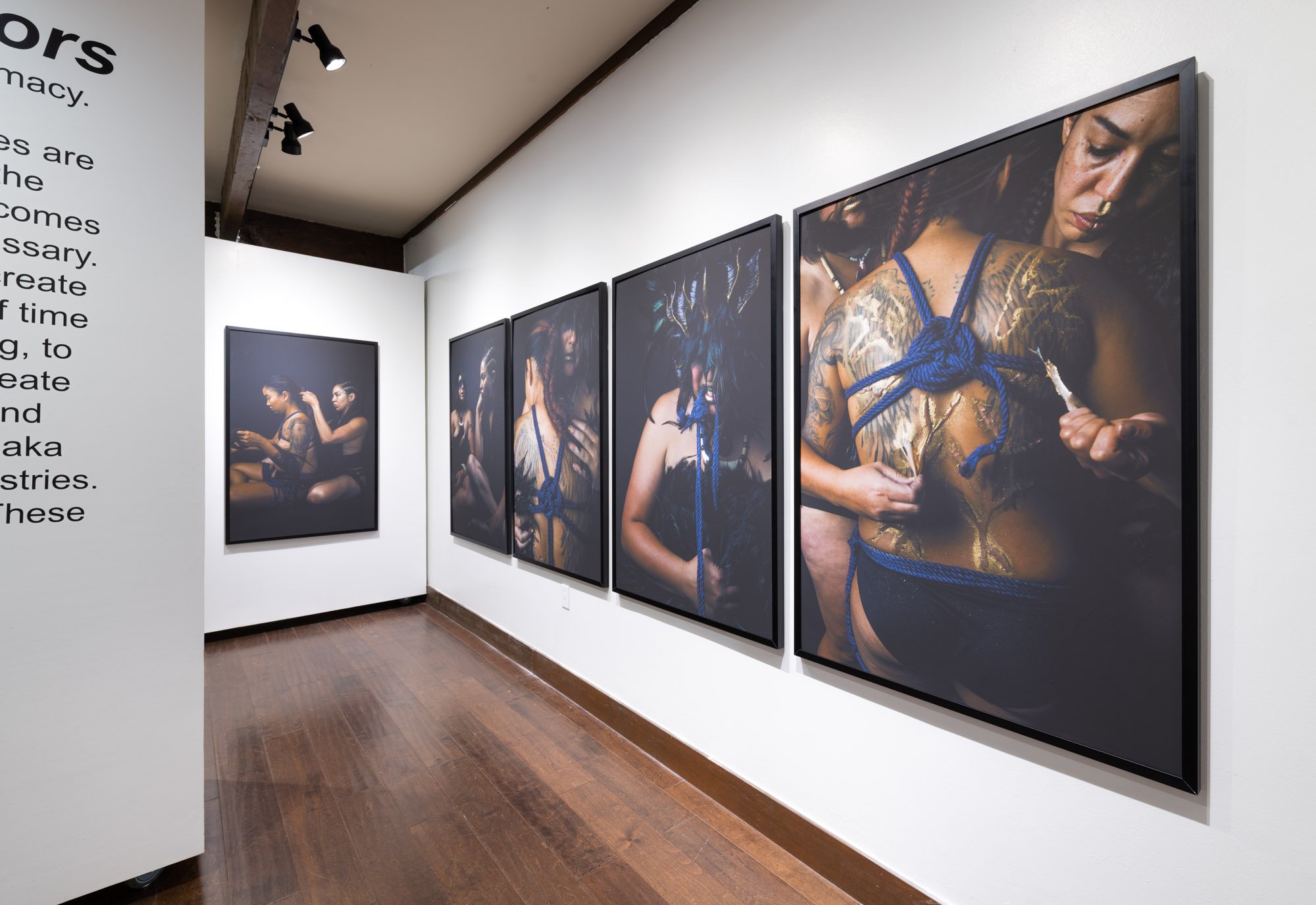
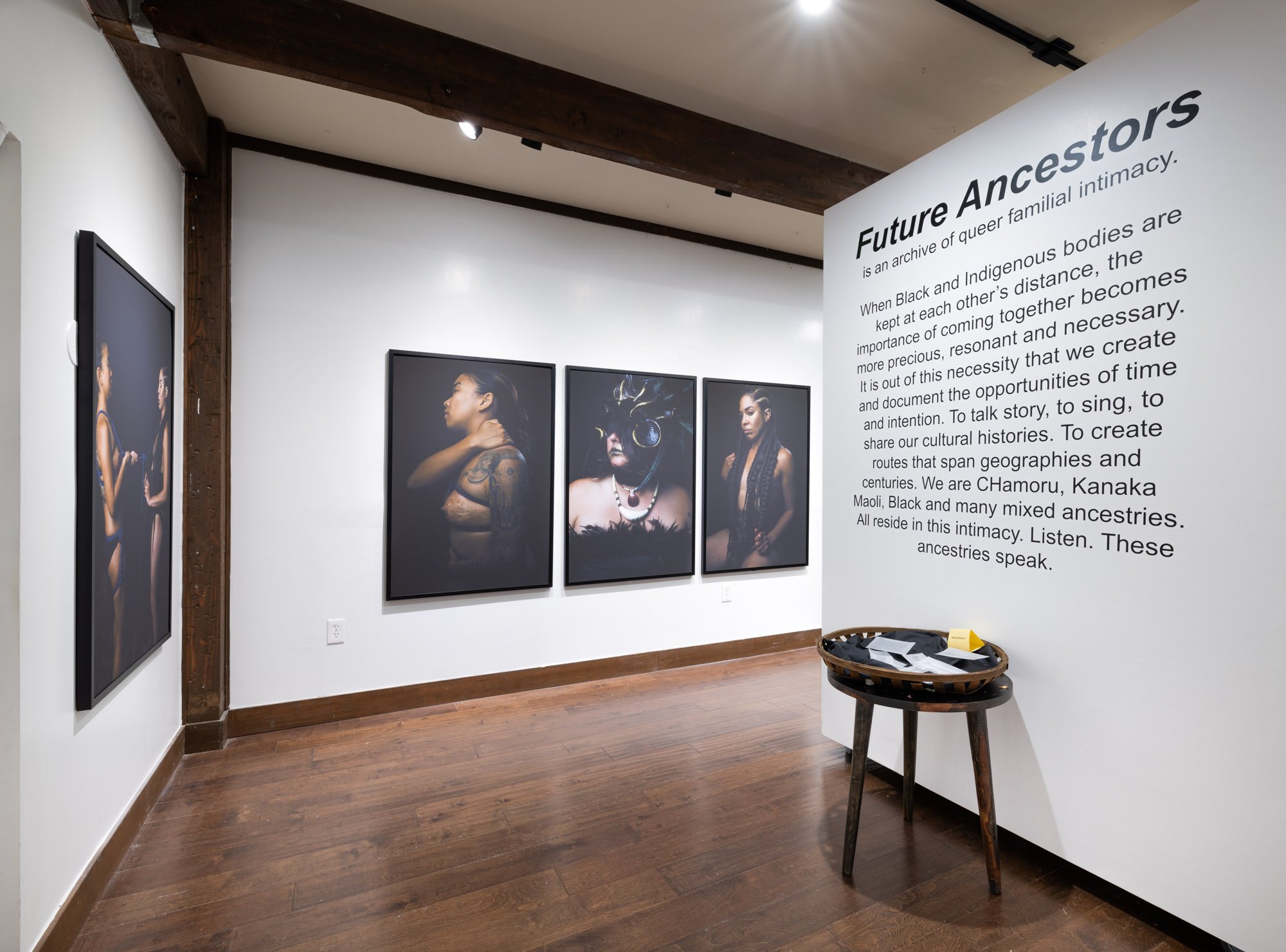
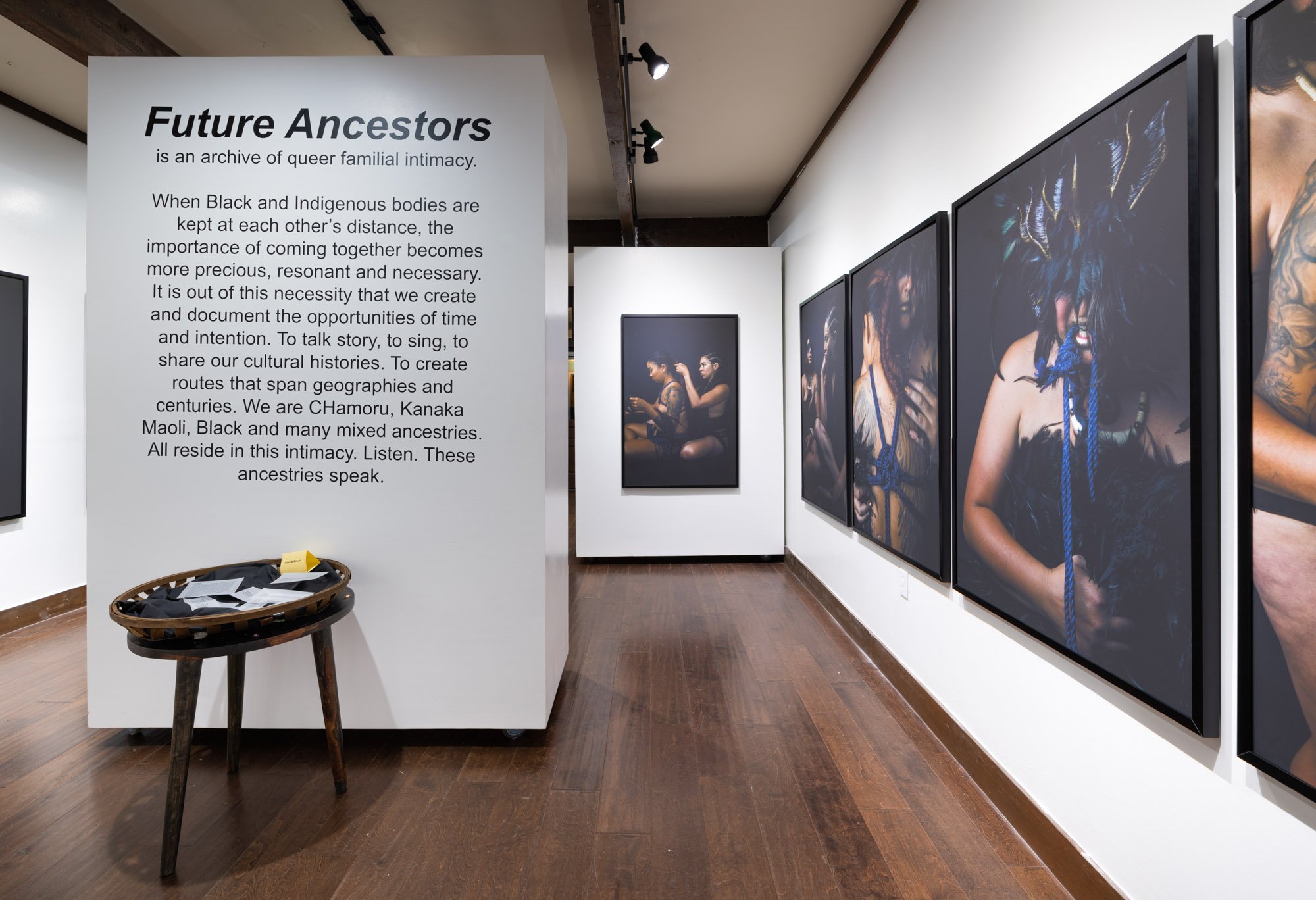
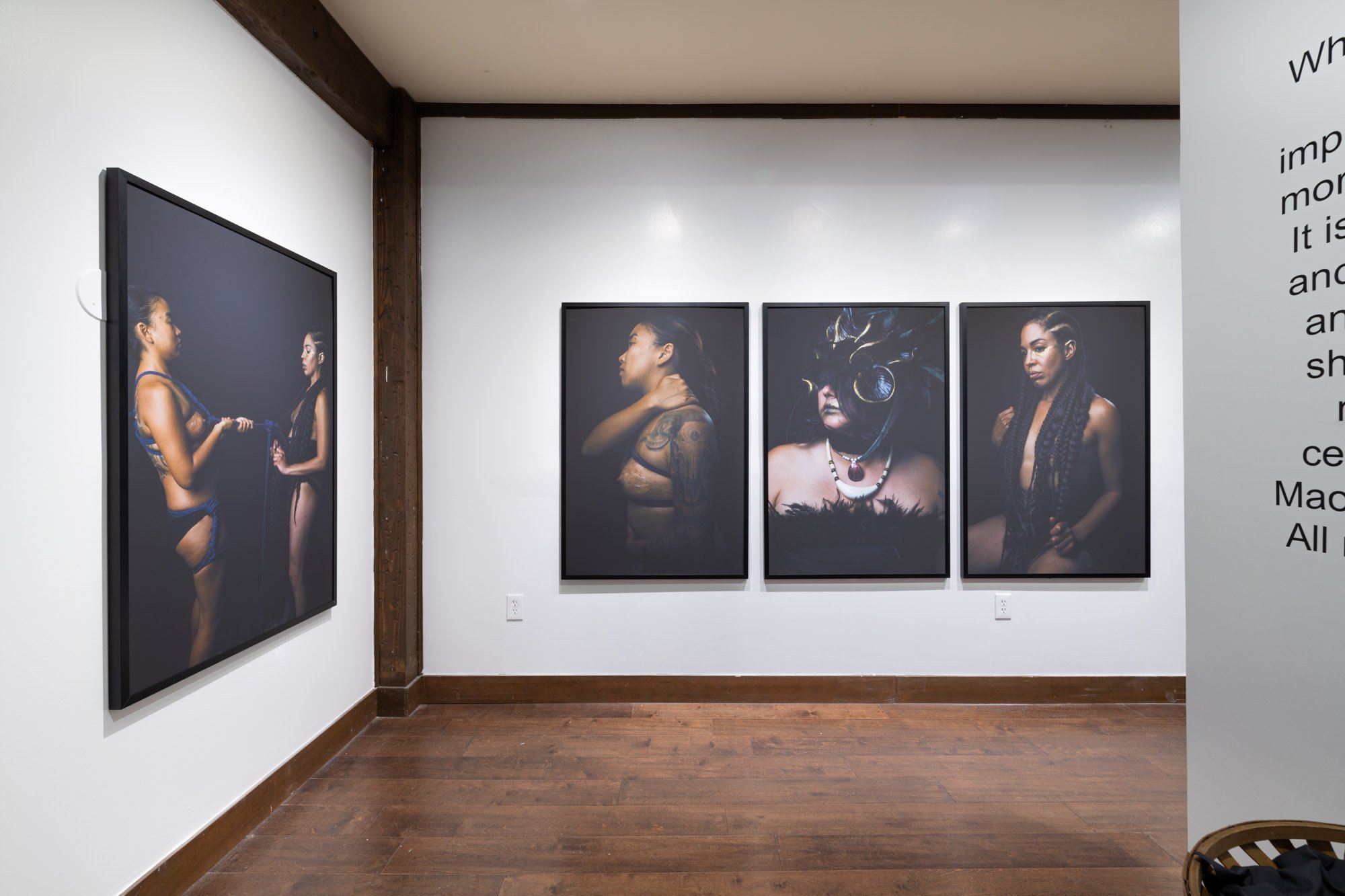
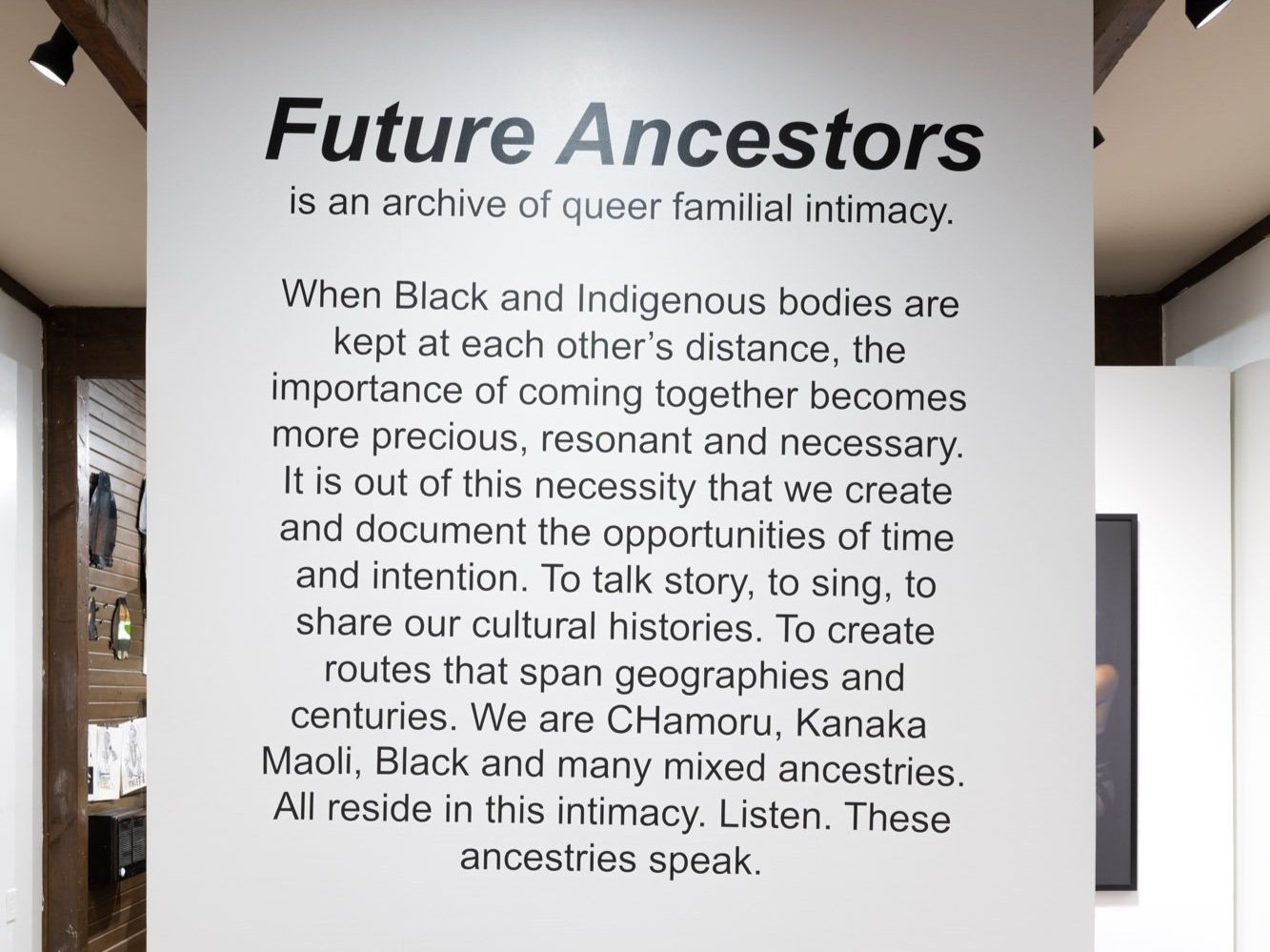
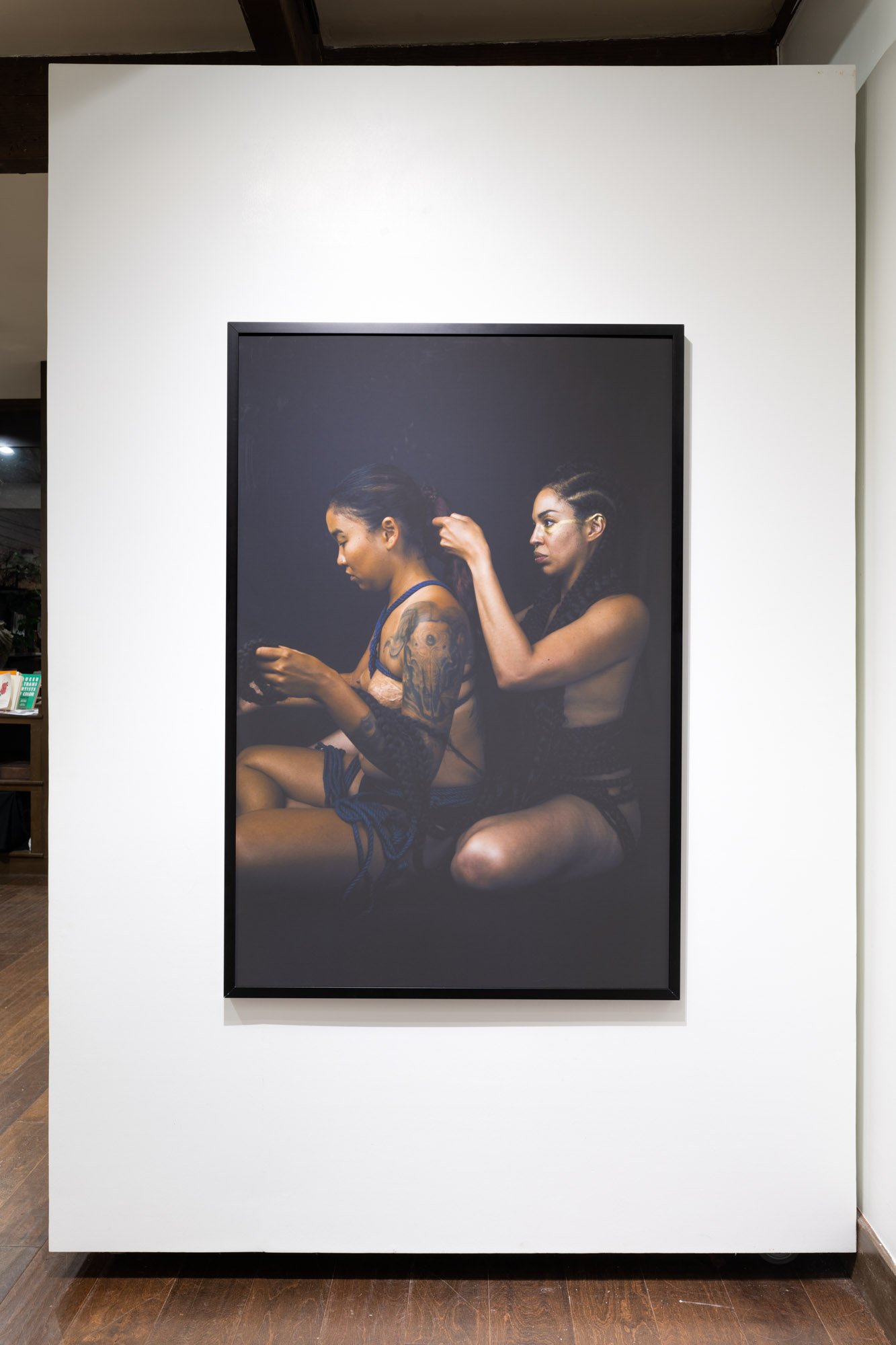
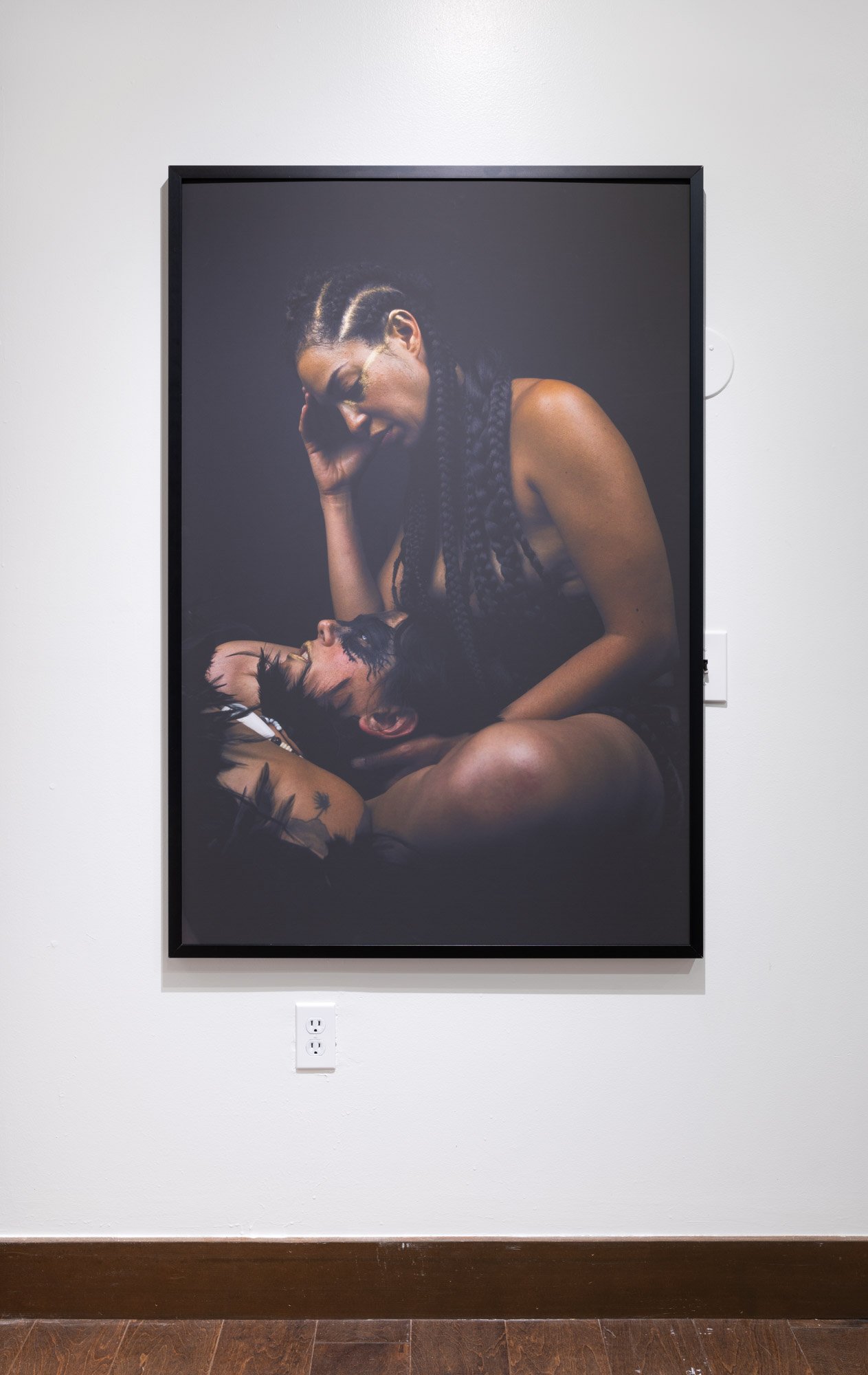

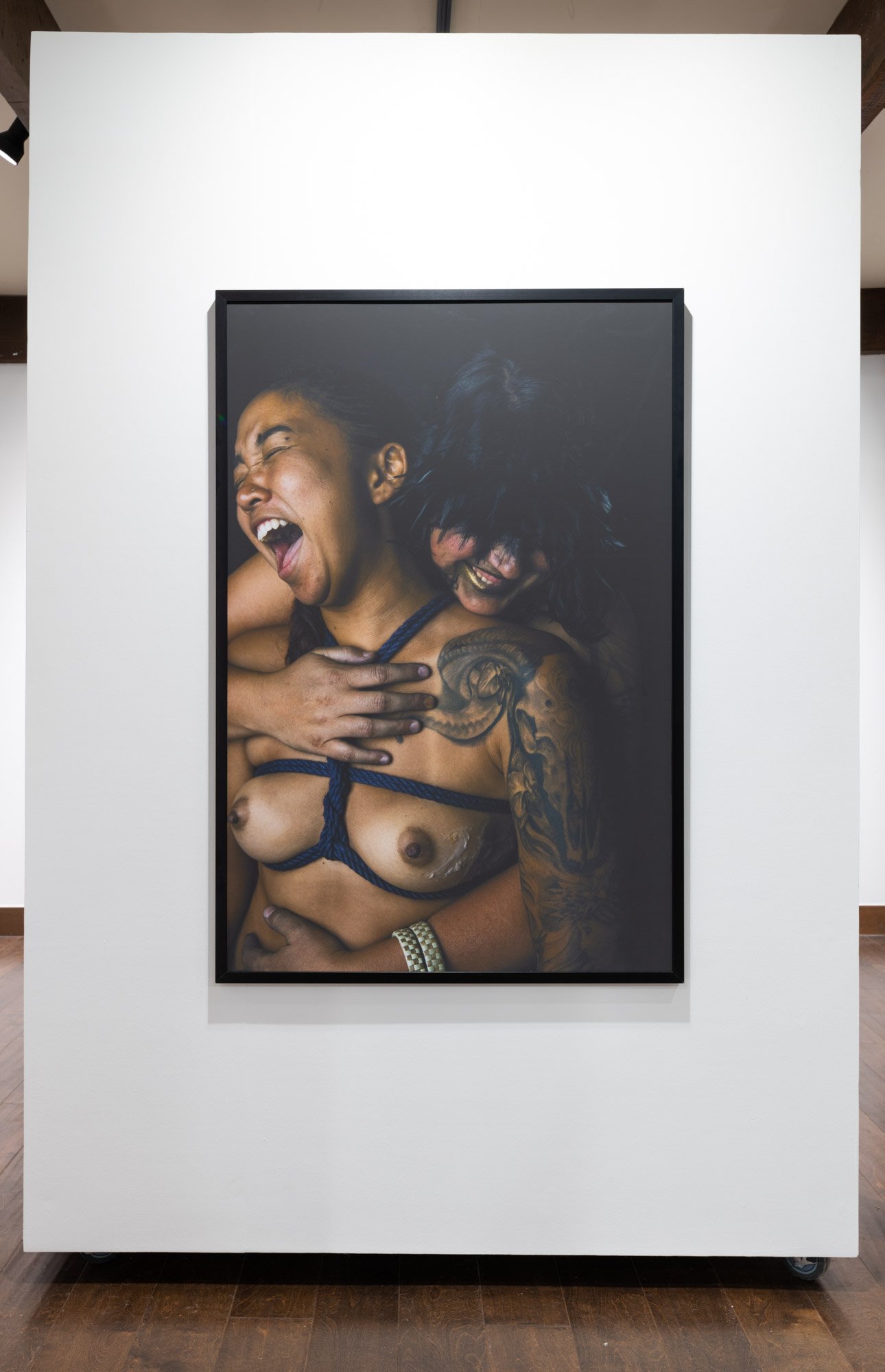

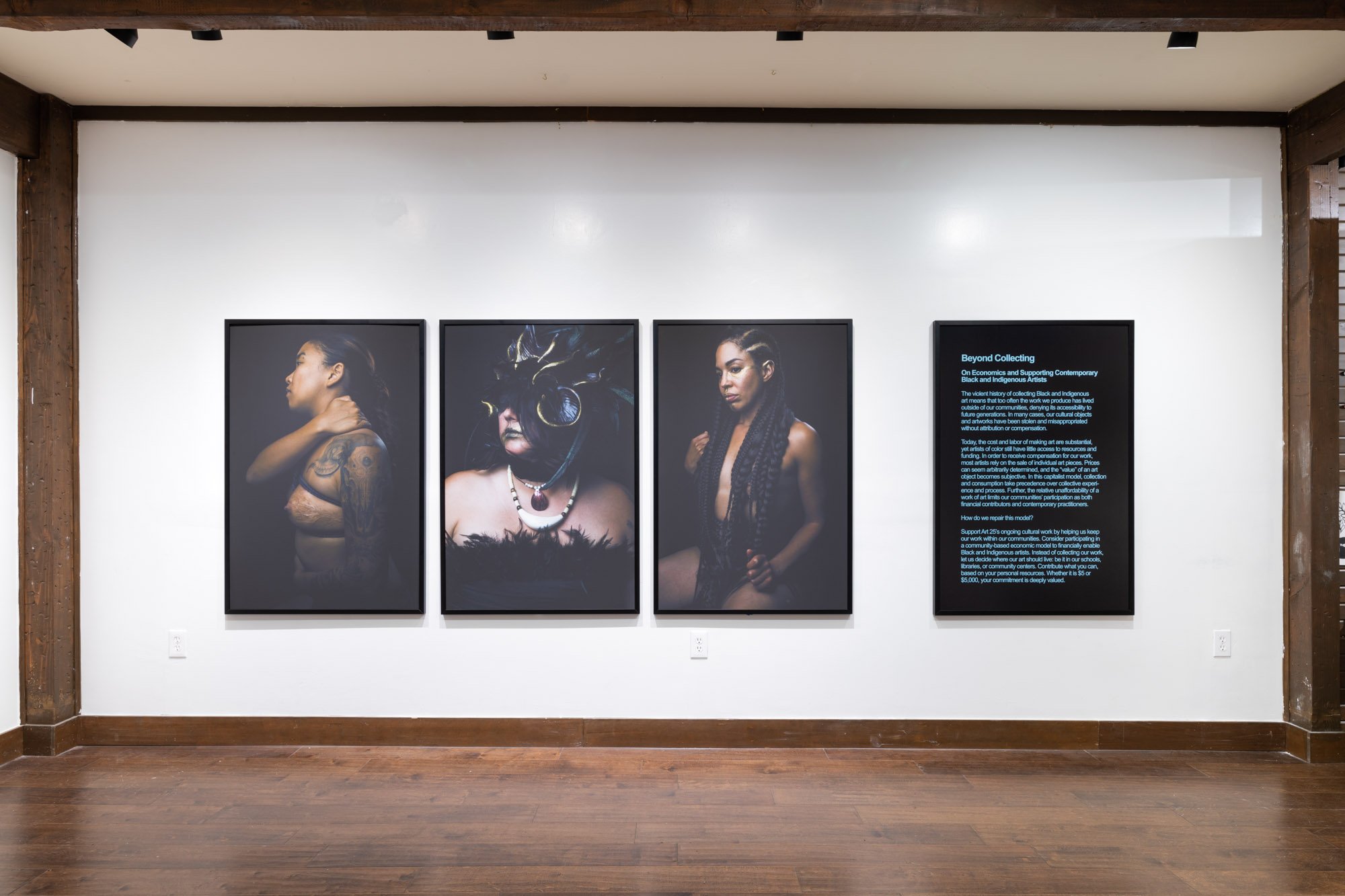
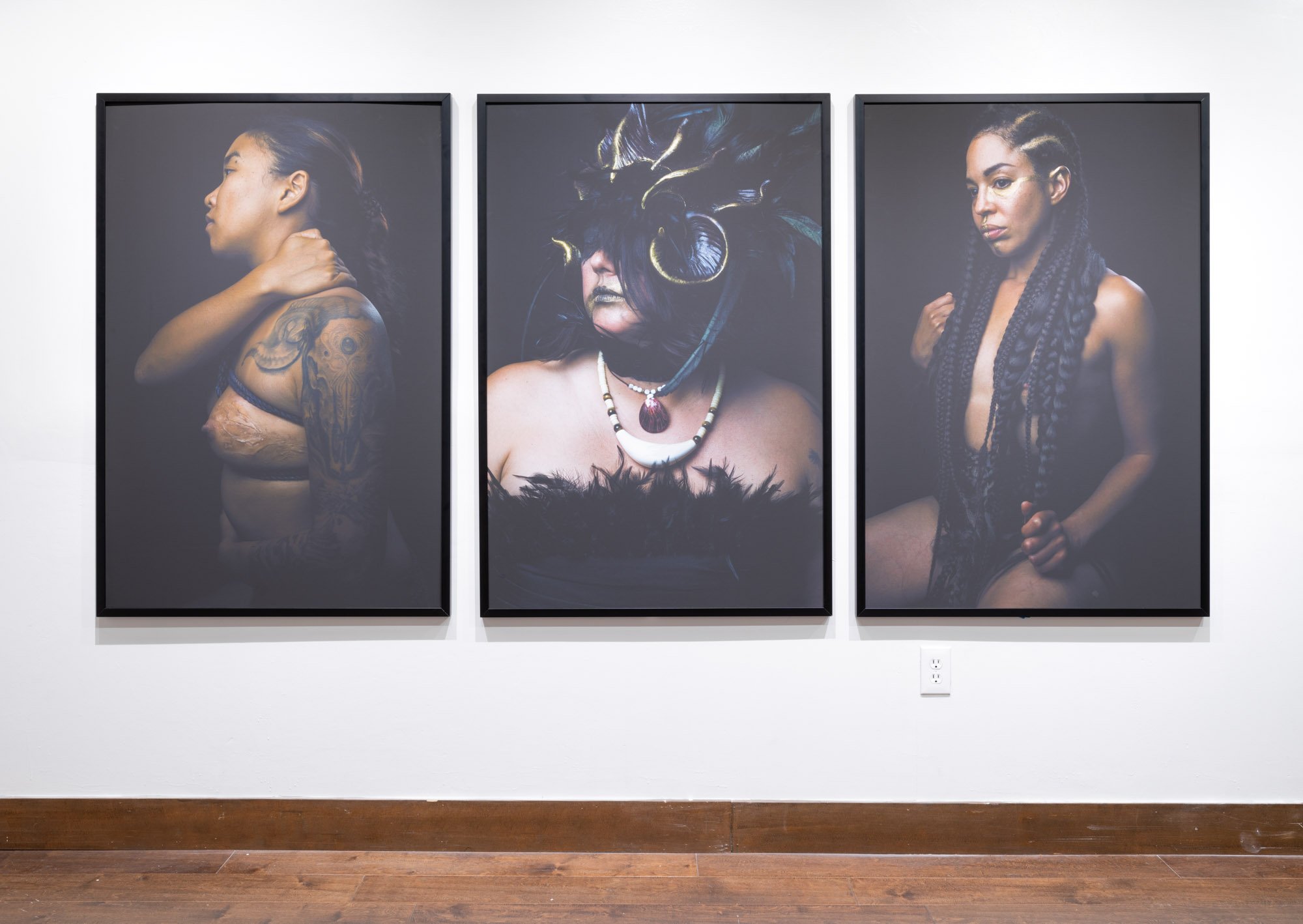
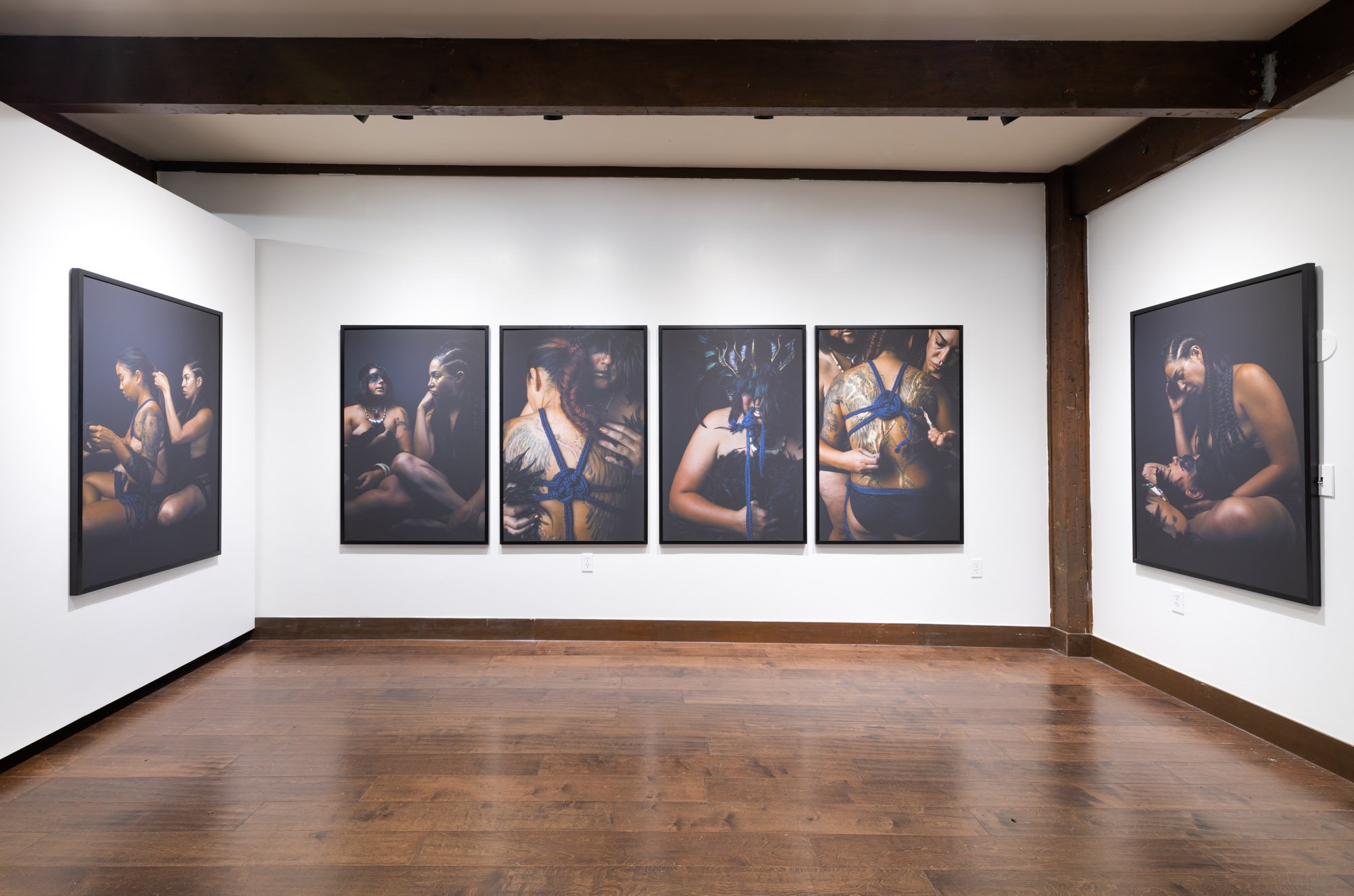

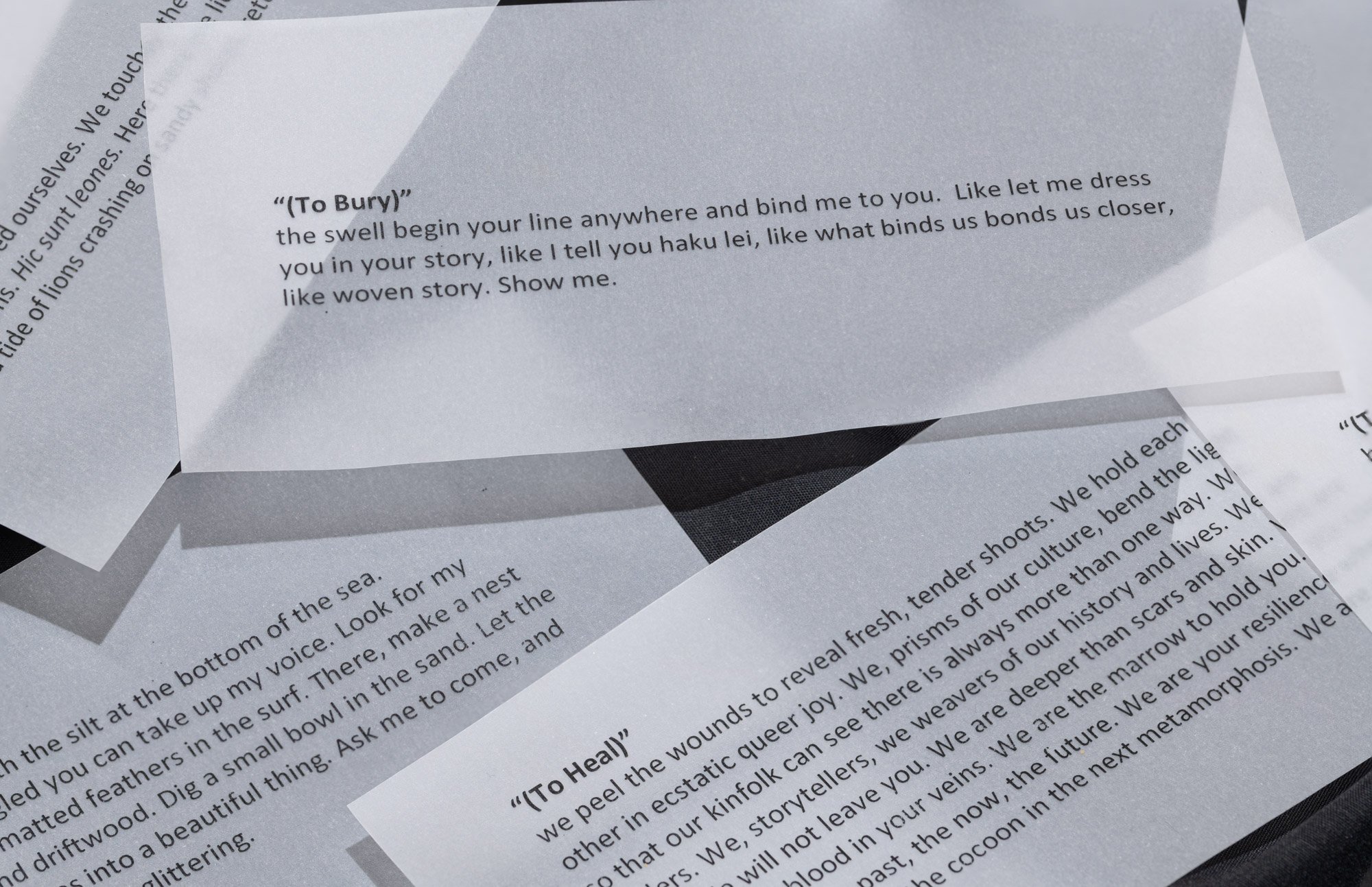



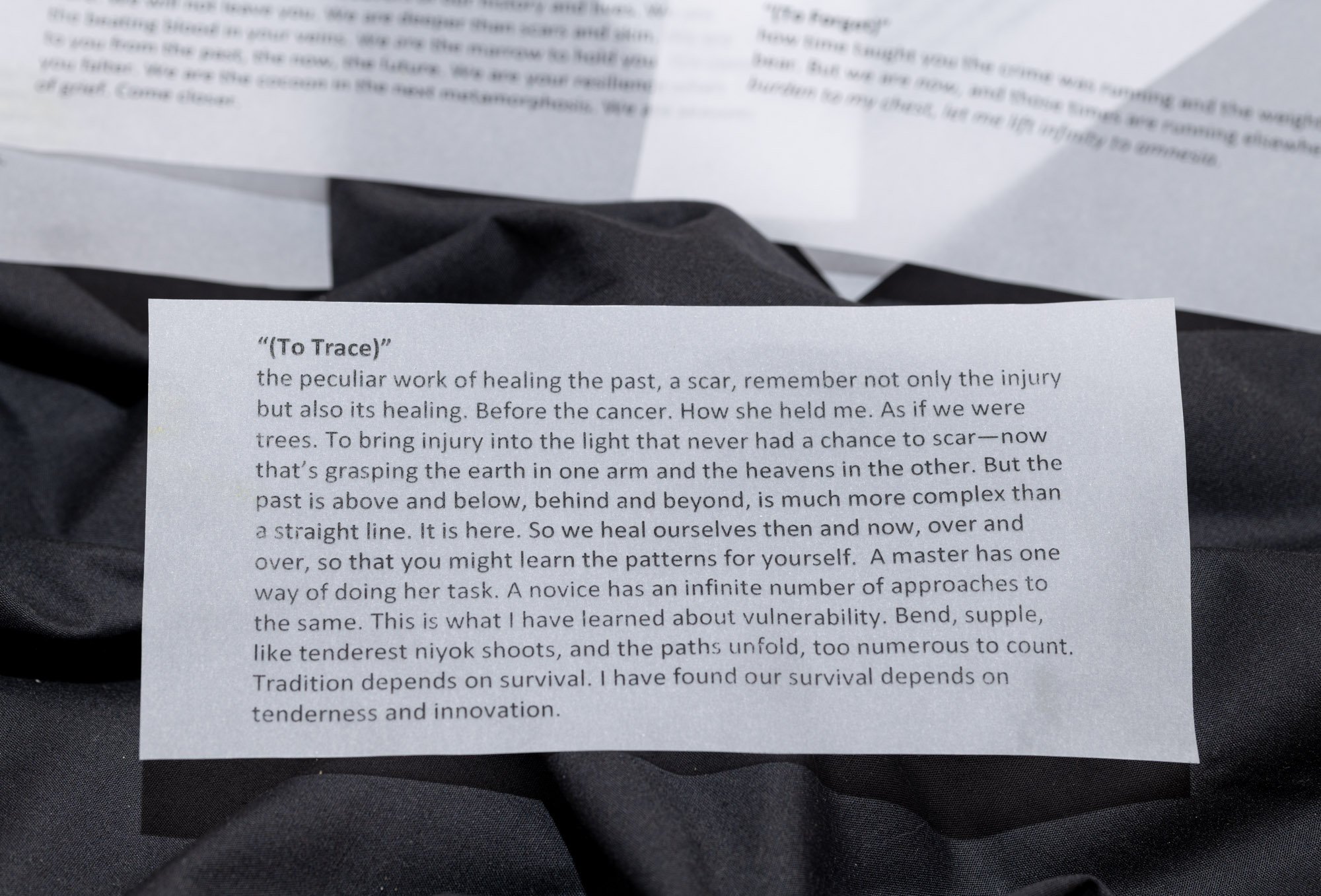
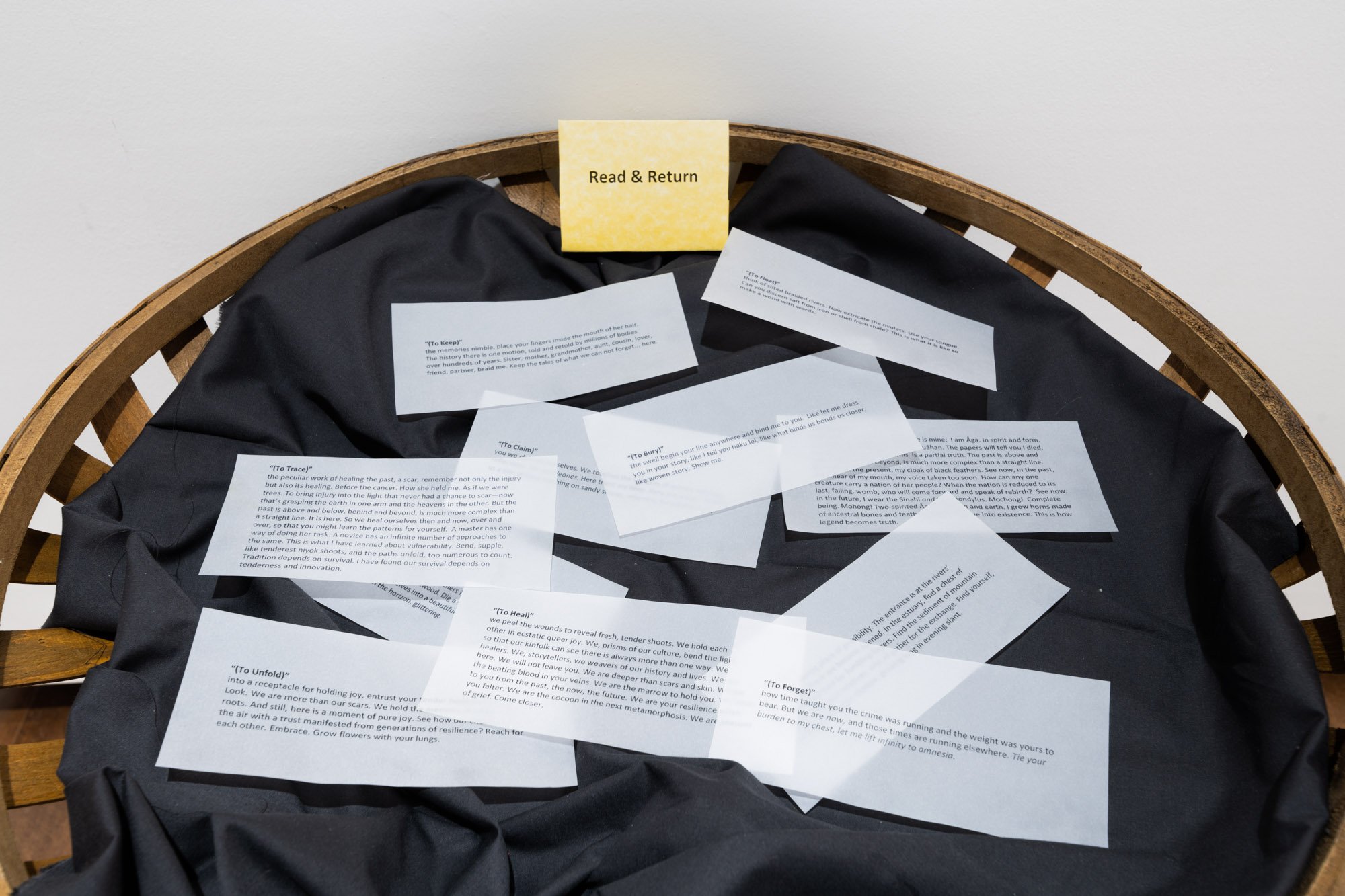
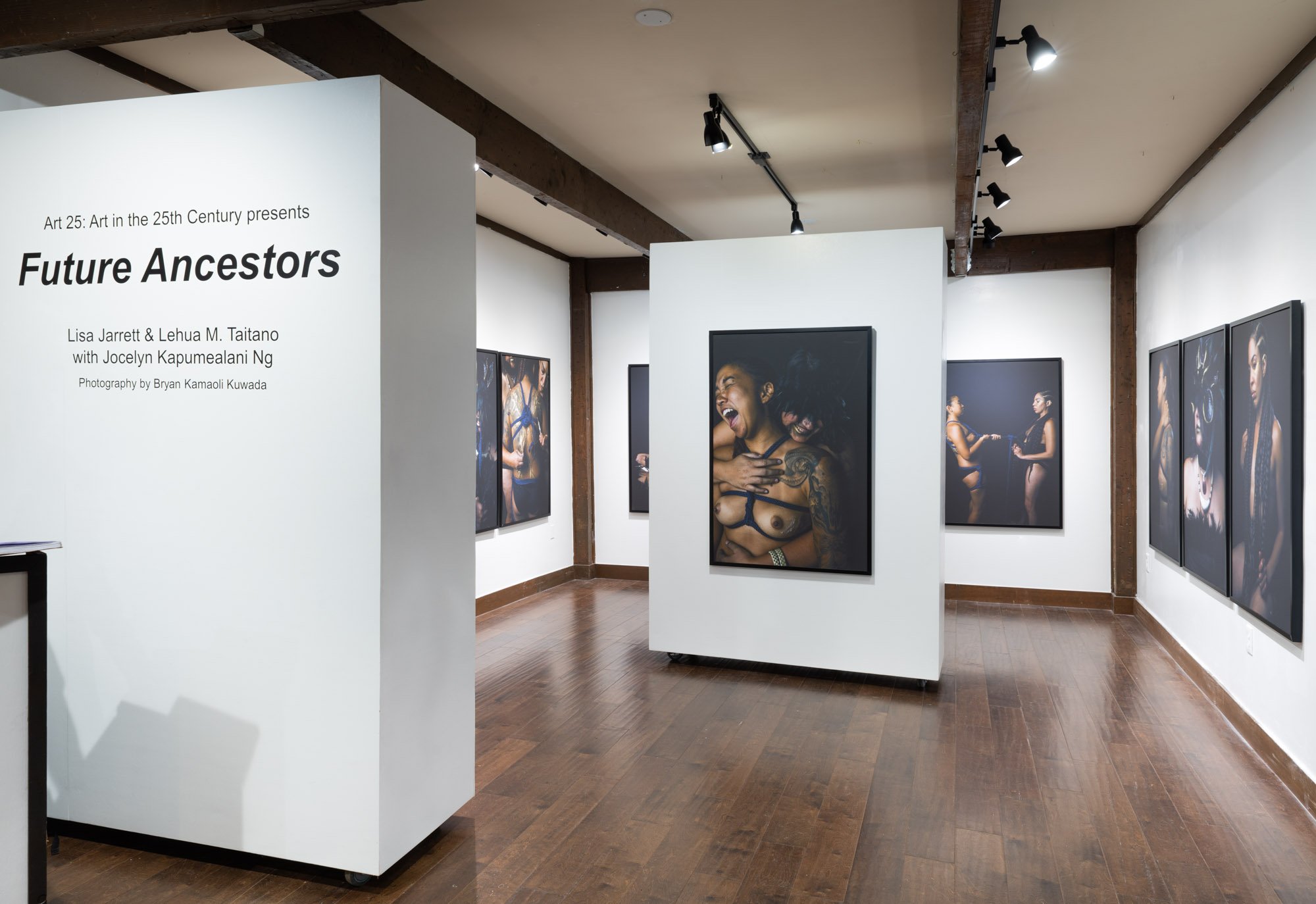
The Unburden Project
The Unburden Project is a collaborative, somatic poetry project that debuted as part of An Aberrational Poetics: Inside Me an Island Shaped (W)hole at 'Ae Kai: A Culture Lab on Convergence, presented by The Smithsonian Institute's Asian Pacific Arts Center on July 7, 2017. One of 8 interactive, somatic poetry installations, “Unburden” asked participants to think about human relationships with living plants, specifically edible plants commonly grown in backyard gardens. Participants were asked to unburden themselves of a secret they have been keeping that continues to affect them in negative ways. Rather than tell their secret to another person, they wrote the secret on a slip of rice paper and added the paper to a bucket of organic soil. The artists then composted the bucket of secrets in collaboration with a local, organic farm, where the process of decomposition added to and enriched the soil content. Seedlings were then planted in the compost mixture, thereby continuing the process of growth and release.
The ongoing iterations of The Unburden Project investigate how we can connect with and be healed by the earth, the water, the sky, and growing things, through indigenous knowledge, intuition, and creative practice.
The Unburden Project has exhibited at SOMarts for Urban X Indigenous: Unite the Tribes (San Francisco), University of Arizona for Thinking Its Presence Literary Conference (Tucson), CU Boulder, and various colleges, universities, and bookstores in California and the Pacific Northwest.
An Aberrational Poetics: Inside Me an Island Shaped (W)hole
An Aberrational Poetics…is Art 25’s debut exhibition, as commissioned by Smithsonian Asian Pacific America Center for ‘Ae Kai: A Culture Lab on Convergence, a pop-up museum at the Ala Moana Center in Honolulu, Hawai’i.
The large-scale, interactive installation comments on the effects of centuries of forced colonial practices upon the CHamoru artistic community and explores the means by which modern CHamoru art practitioners glean cultural knowledge in spite of displacement politics that have and continue to divide communities. Via interactive, somatic poetry experiences, the project encourages audience interaction with living plants grown in a space infused with creative energy, with the purpose of transferring that energy to the land in which they were eventually planted, further reinforcing the ideas of Indigenous art practices and their contributions to—not in isolation from— the land from which they are inspired and fed.
-
Chant, Chew, Clap, Draw, Sing, Smile, Snip, Unburden
Encircling the interior dwelling, eight somatic poetry stations urge viewers to participate with living plants to recall, remember, or envision human interactions with plants.
-
A structure based on “pre-contact” CHamoru dwellings, created with contemporary materials and by contemporary means.
-
The artists volunteered ‘at Hoʻoulu ʻĀina, a 100-acre nature preserve nestled in the back of Kalihi valley on the island of Oʻahu. They removed invasive bamboo from the property to use as building materials for the installation. Post-installation, all living plants and soil were taken to Hoʻoulu ʻĀina, where elements were either composted or planted out in the community garden and participants shared in land ceremony.
Somatic poetry experience detail: Unburden.
Bamboo harvesting at Hoʻoulu ʻĀina.
Dwelling installation view.
Unburden
Take a moment and think about a secret you've been keeping that has created a negative feeling for you. With the intention of unburdening yourself, write down your secret on the provided slip of rice paper, then crumple the paper and add it to the container of soil.
Your unburdened secret will travel to an organic
garden in Santa Rosa, CA, where it will be composted and integrated into a seed bed. Your offering of intention will add to the soil content in which organic plant starts will grow. Your privacy will be protected, and your secret will not be read by anyone. Perhaps as it dissolves into the land, your emotional burden will transform, aided by the energy of creation and growth. Your contribution of self will be part of the story of these plants, which will become part of the story of the land and the community.
Somatic poetry experience detail: Sing.
Somatic poetry experience detail: Chew.
